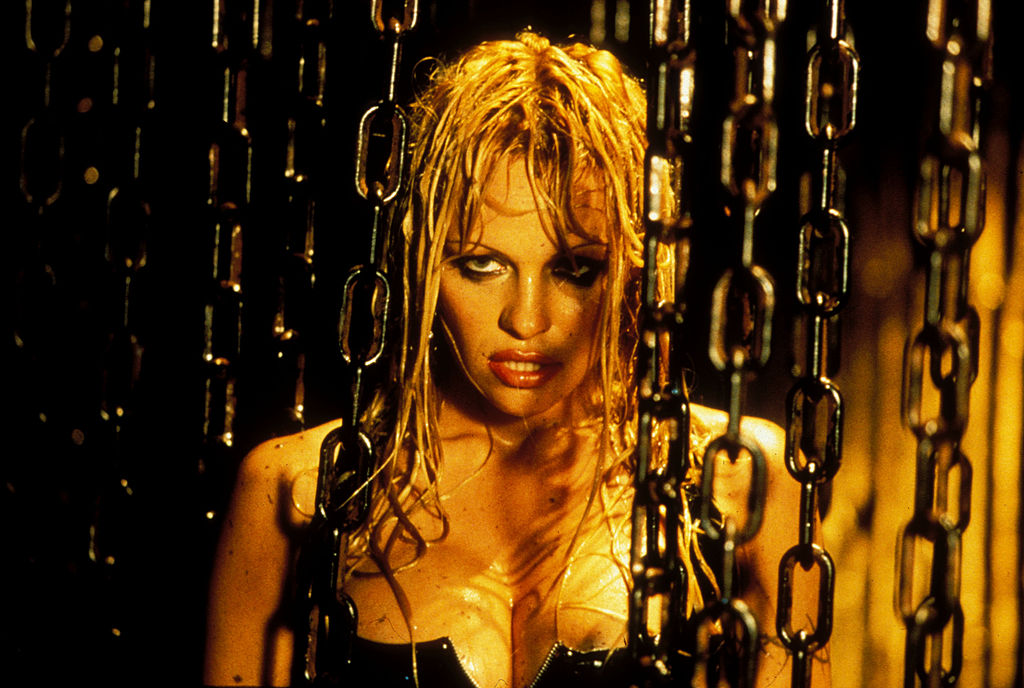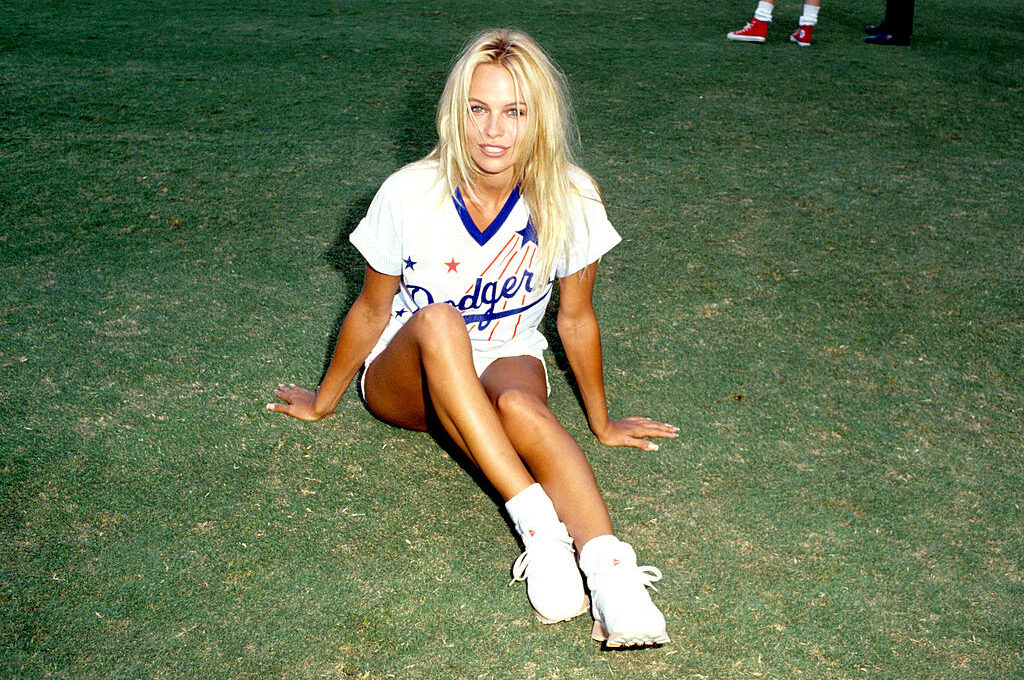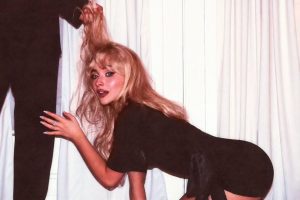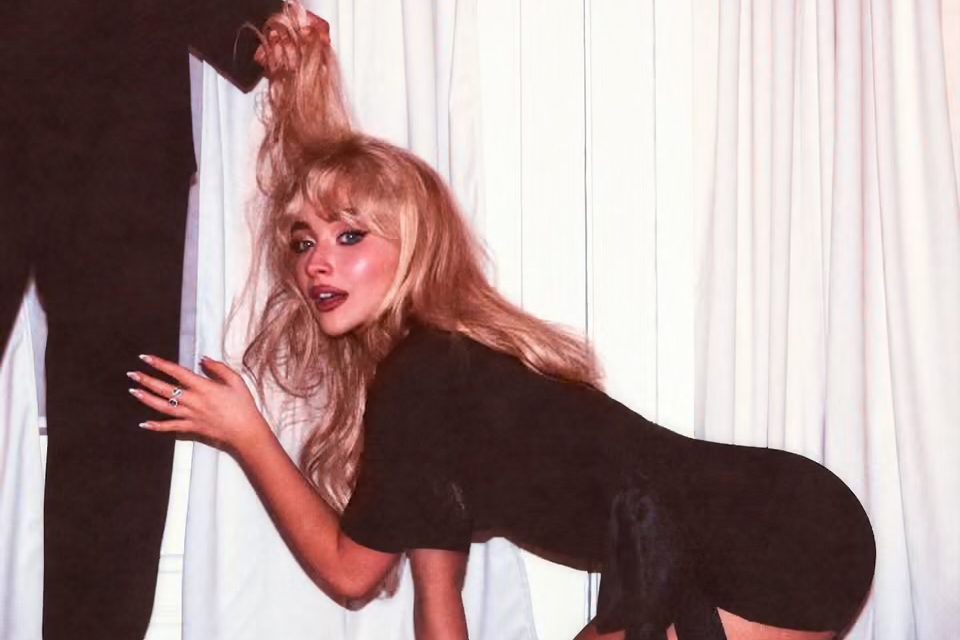Pamela Anderson’s life story contains several showbiz-beauty clichés: an abusive childhood, accidental fame and many marriages. Unlike Marilyn Monroe, Lana Turner or Rita Hayworth, she didn’t grow up with the Hollywood studio system, so there were no brilliant writers and directors laid on to make her acting career memorable. But the absence of this structure — in which women were deemed past it at thirty-five — also meant that she could do much as she pleased at an age when those earlier sex symbols were distraught, depressed or dead. Ten years ago she was branded “delinquent” for running up $493,000 in unpaid taxes and moving to a trailer park in Malibu. Last year she bounced on to Broadway with a triumphant run in Chicago, and this year she has a smash hit Netflix documentary and a likely bestseller in this book.
Anderson was twenty-two when, at a sports event, her face was captured by one of those weird giant roving cameras. It might serve as a metaphor for her life: pretty woman minds her own business as the perving eyes of the mob fasten on her. Of course she could simply have said no when Hugh Hefner came calling, but she went on to appear on more Playboy covers than anyone else. Girls from straitlaced backgrounds might struggle when they first disrobe for pay, but our humble heroine had no such fetters. It can be embarrassing when people describe themselves as “free spirits” (I always assume this means they won’t be using proper punctuation), but when Anderson portrays herself as one it’s a fact.
She was born in 1967 to teenage parents, a chimney sweep and a waitress (“hot trouble — the local Bonnie and Clyde”), in a fishing village on Vancouver Island. (She scolds us about politics from the get-go: “You can’t ‘discover’ a land where people already live — history is often rewritten to make heroes out of monsters.”) She grew up on the beach, a good training for the slo-mo running which would make her an ambulatory cultural landmark. A striking image in one of her poems in which the adult Pamela watches the child Pamela rock-pooling (“The real me — unpolluted”) makes it clear that this is more than just another showbiz kiss-and-tell. Her grandmother drank sherry for breakfast and hung out with Hell’s Angels; her father looked like Elvis and read the Bible all the way through ten times; and her mother was so poor she used soup cans to curl her beautiful blonde hair. It’s entirely likely that there isn’t one boring thing about Pamela Anderson.
It’s often tempting to wonder if beautiful women of the tender kind would have been happier staying in their own backyard. Poor Marilyn is the subject of such posthumous patronizing. But that seems not to grasp the fact that beauty has its own velocity. Young Pamela was already accustomed to not wearing much in this seaside Eden (“semi-nude clambakes… skinny-dipping nights”) and to finding the serpents early in life. Molested as a child by a babysitter, gang raped as a schoolgirl and with a violent boyfriend as a teenager, she was well prepared for any horrors Hollywood might hold. The physical indignities forced on her before she is even a woman made her philosophical, where others might have been traumatized: “I was sexualized so young that I skipped past the promiscuity phase. I would only mix sex with love.”
She moved to the big city — or at least Vancouver — to work in a tanning salon attached to a gym where she discovered aerobics and consensual sex, quickly becoming engaged to a man called Michael. “One day I came home to find him suspiciously washing his penis in the sink,” she writes. When the telephone that was simultaneously ringing turned out to be Playboy calling, he hurled a tray of silverware at her head — and it was obviously time to get out of Dodge. After her arrival in Los Angeles, it would be first-class travel from then on. Having been abused by men, she could turn the tables, and contemplate men abusing themselves over her, while paying handsomely for the pleasure.

Her determination to see the best in every situation means that even Hefner emerges well from this memoir, though he has been painted as a pitiful figure in recent years, especially by former girlfriends. He was shrewd enough to know how commercially viable Anderson was, which may explain why she in turn views him as “a mythological figure… a Methuselah.”
Big things continued to happen to her by accident. The Baywatch part was won when she went along to an audition to keep her actor boyfriend company. Much of what followed was hysteria: her marriage to Tommy Lee, the stolen sex tape and her political crusades, from PETA to Julian Assange. She learnt how to speak French, eat an artichoke and become a woman of the world. But after six marriages and much traveling she has returned to the home she grew up in, with her parents living in a house she bought them round the corner, the abused little girl now a serene matriarch.
It’s a riveting story, excellently told; and even if the poetry can get a bit much, it’s far better than the swill Bono foisted on us in his memoir last year. That said, free-form verse running over twelve pages is not nice, so one can only hope that Anderson discovers the joys of the haiku in the near future.
“There are no second acts in American lives,” wrote F. Scott Fitzgerald; but now that we’re all living longer, a rise after a fall is a common occurrence in our cultural landscape. It’s especially pleasing that screen beauties who would once have been cast aside when their bloom faded are allowed to be both heard and seen. At last this fascinating woman can be judged as the sum of her parts rather than just as some of her parts.
This article was originally published in The Spectator’s UK magazine. Subscribe to the World edition here.

























